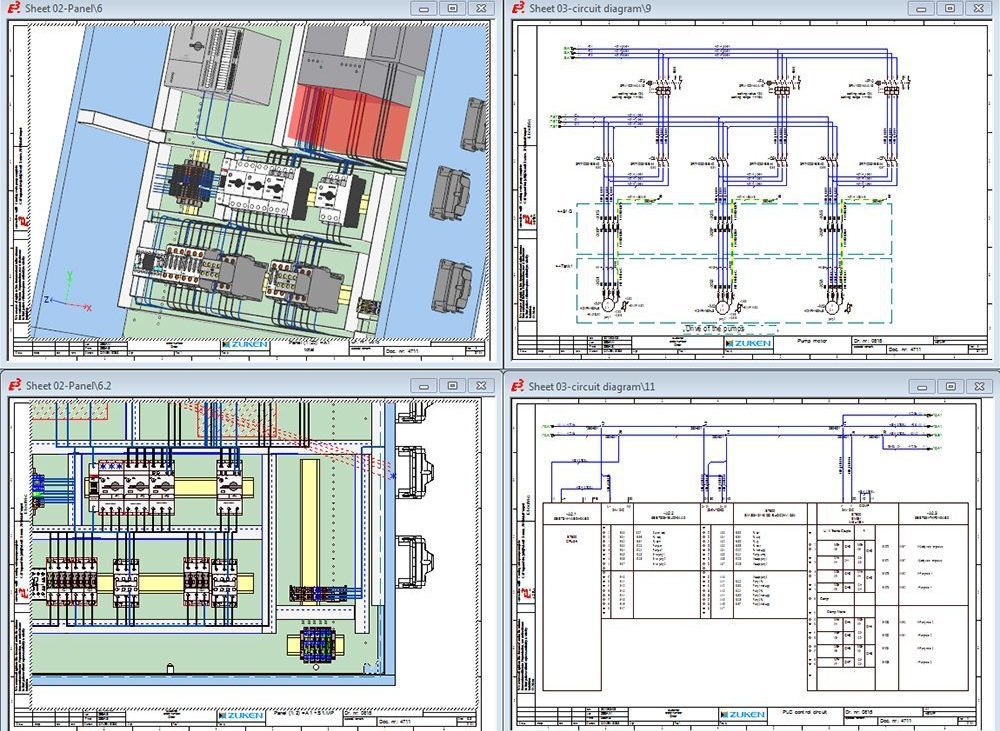Cutting-edge Electric Design Services for Modern Facilities
As urban settings expand increasingly complicated, incorporating innovations such as smart grids and eco-friendly power sources becomes vital. These advancements not only assure to enhance power consumption but also foster durability versus future demands.
Importance of Cutting-edge Electrical Design
Ingenious electric design plays a crucial role in modern-day framework, affecting not only efficiency however also sustainability. As cities develop and the need for power boosts, the demand for innovative electrical systems comes to be vital. These systems have to not just meet present needs yet also expect future development and technical innovations.
A well-executed electric design can dramatically lower power usage, thus reducing functional expenses and lessening environmental influence. By incorporating renewable resource resources, such as solar panels and wind generators, cutting-edge styles can improve power independence and strength. In addition, wise grid modern technologies permit for real-time tracking and management of energy circulation, optimizing efficiency and decreasing waste.
Safety is an additional important facet of electric design. Implementing innovative innovations and extensive standards can reduce threats related to electric failings, guaranteeing a secure setting for organizations and locals alike. In addition, cutting-edge designs assist in flexibility, allowing infrastructures to incorporate arising technologies seamlessly.
Trick Trends in Electric Design
As the landscape of electrical design continues to progress, numerous key fads are shaping the future of the industry. One considerable pattern is the integration of wise modern technology right into electrical systems. The spreading of the Net of Things (IoT) has actually allowed real-time tracking and control of electric tools, boosting performance and facilitating anticipating maintenance.
One more fad is the expanding emphasis on modular design. This technique permits versatile and scalable remedies, enabling facilities to adjust to altering demands without extensive remodellings. Additionally, making use of sophisticated simulation devices and Structure Details Modeling (BIM) is coming to be progressively common, streamlining the design process and boosting collaboration among stakeholders.
Moreover, innovations in products science are causing the advancement of lighter, more sturdy, and energy-efficient components. This development is specifically important for high-performance structures and framework tasks.
Lastly, there is a marked change towards data-driven decision-making - electrical design services. Leveraging information analytics assists designers maximize systems for performance and cost-effectiveness. Together, these fads represent a transformative era in electrical design, enhancing performance, sustainability, and resilience in modern facilities
Sustainable Energy Solutions
Lasting power services are progressively becoming an essential focus in electrical design, mirroring a more comprehensive commitment to ecological obligation and resource effectiveness. These solutions aim to minimize environmental effect while maximizing energy consumption in different facilities, from domestic buildings to big industrial centers.
Among the primary techniques entails the combination of renewable resource sources, such as photovoltaic panels and wind generators, into electric systems. This not only lowers dependence on fossil fuels yet additionally enhances power strength. Additionally, innovative energy storage systems, such as sophisticated batteries, enable efficient administration and distribution of power, ensuring that excess power created during peak production can be made use of during high demand periods.
Moreover, energy-efficient design methods are being adopted to enhance total system efficiency. This includes making use of energy-efficient lights, heating and cooling systems, and wise structure innovations that check and adjust power use based upon tenancy and environmental problems.
Smart Grid Technologies
The implementation of sustainable energy solutions normally brings about the expedition of clever grid innovations, which play a critical function in updating electrical systems. Smart grids take click to read advantage of progressed interaction modern technologies and information analytics to improve the integrity, performance, and sustainability of electricity distribution. By incorporating digital technology with traditional grid infrastructure, these systems facilitate real-time tracking, automated control, and improved decision-making abilities.
One of the crucial features of smart grids is their capacity to suit eco-friendly energy sources, such as solar and wind power. This flexibility not just decreases dependence on nonrenewable fuel sources however also permits a more decentralized energy manufacturing design. Clever grids allow need feedback programs, where customers can adjust their power usage based on real-time prices, thus promoting power conservation and decreasing peak load needs.
Additionally, smart grid technologies boost grid durability by enabling quicker recognition and resolution of blackouts, eventually minimizing downtime. With anticipating upkeep and analytics, energies can boost and maximize procedures service distribution. As communities and cities proceed to evolve, wise grid technologies are essential for building a efficient and sustainable electrical facilities that fulfills the demands of modern society.

Future-Proofing Infrastructure
To guarantee long-term stability and versatility, future-proofing infrastructure is crucial in the quickly evolving landscape of electrical design services. As technology breakthroughs and power demands change, it is vital that electrical systems are created with versatility in mind. This entails including scalable services that can fit future upgrades without requiring extensive overhauls.

Furthermore, sustainability has to be a foundation of future-proofed my response layouts. Making use of renewable resource sources, such as solar and wind, and enhancing energy efficiency minimize dependence on nonrenewable fuel sources, straightening with worldwide initiatives to fight environment adjustment.
Conclusion
By focusing on flexibility, effectiveness, and sustainability, these services attend to Click This Link the progressing needs of power systems. The integration of smart grid technologies and lasting power services boosts durability and reduces operational prices.
A well-executed electrical design can significantly reduce power intake, consequently lowering functional expenses and decreasing ecological impact. By integrating renewable power sources, such as solar panels and wind generators, cutting-edge layouts can boost energy self-reliance and durability. Additionally, ingenious energy storage space systems, such as sophisticated batteries, enable effective administration and distribution of energy, making sure that surplus power created during top production can be used during high need periods.
Clever grids allow demand reaction programs, where customers can readjust their energy use based on real-time rates, therefore promoting power conservation and lowering peak tons demands. (electrical design services)
As technology developments and power needs change, it is important that electric systems are developed with flexibility in mind.